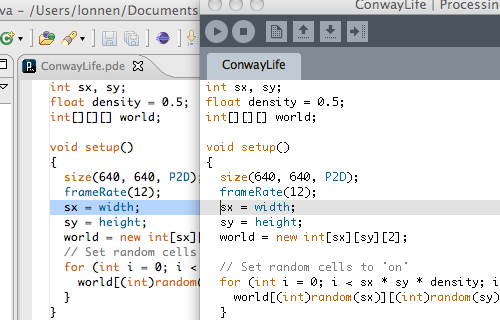Processing + Eclipse
Exciting news! The short story is that there’s a new Processing Plug-in for Eclipse, and you can learn about it here.
The long story is that Chris Lonnen contacted me in the spring about applying for the Google Summer of Code (SoC) program, which I promptly missed the deadline for. But we eventually managed to put him to work anyway, via Fathom (our own SoC army of one, with Chris working from afar in western New York) with the task of working on a new editor that we can use to replace the current Processing Development Environment (the PDE).
After some initial work and scoping things out, we settled on the Eclipse RCP as the platform, with the task of first making a plug-in that works in the Eclipse environment (everything in Eclipse is a plug-in), which could then eventually become its own standalone editor to replace the current PDE.
Things are currently incomplete (again, see the Wiki page for more details), but give it a shot, file bugs (tag with Component-Eclipse when filing), and help lend Chris a hand in developing it further. Or if you have questions, be sure to use the forum. Come to think of it, might be time for a new forum section…


